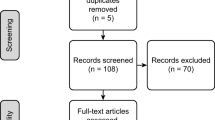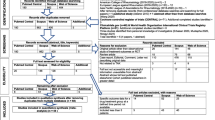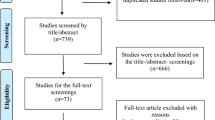Abstract
Although the association between Takayasu arteritis (TA) and latent or active Mycobacterium tuberculosis infection has been suggested for a long time, studies conducted in recent years are challenging this notion. Until recently, the possibility of a pathogenic relationship between TA and tuberculosis (TB) was considered a medical curiosity, but the advent of tumor necrosis factor (TNF) inhibitors as therapy for recalcitrant TA cases, as well as the widespread use of Bacille Calmette-Guérin (BCG) for vaccination purposes, has relocated this association as a top priority issue. In an attempt to define whether both diseases are pathogenically linked or if their association is only epiphenomenal in nature, we conduct a thorough literature search on the development of TB in patients with TA receiving TNF inhibitors. From a total of 13 studies that included 214 patients, the occurrence of TB was observed only in two individuals exposed to infliximab. This frequency of 0.93% is similar to that encountered in patients with other rheumatic diseases exposed to TNF inhibitors. Finally, we propose a novel pathogenic model that could reconcile the epidemiological, clinical, and immunological evidence that links TA and TB, while providing rationality for the use of TNF inhibitors in patients with TA.

Similar content being viewed by others
References
de Pablo P, García-Torres R, Uribe N, Ramón G, Nava A, Silveira LH, Amezcua-Guerra LM, Martínez-Lavín M, Pineda C (2007) Kidney involvement in Takayasu arteritis. Clin Exp Rheumatol 25:S10–S14
Amezcua-Guerra LM, Pineda C (2007) Imaging studies in the diagnosis and management of vasculitis. Curr Rheumatol Rep 9:320–327
Sugiyama K, Ijiri S, Tagawa S, Shimizu K (2009) Takayasu disease on the centenary of its discovery. Jpn J Ophthalmol 53:81–91
Duzova A, Türkmen Ö, Çinar A et al (2000) Takayasu’s arteritis and tuberculosis: a case report. Clin Rheumatol 19:486–489
Amezcua-Guerra LM, Castillo-Martinez D (2011) Takayasu’s arteritis and its potential pathogenic association with Mycobacterium tuberculosis. In: Amezcua-Guerra (ed) advances in the etiology, pathogenesis and pathology of Vasculitis, 1st edn. InTech, Rijeka, pp 21–36
Pedreira ALS, Santiago MB (2019) Association between Takayasu arteritis and latent or active Mycobacterium tuberculosis infection: a systematic review. Clin Rheumatol:1–8. https://doi.org/10.1007/s10067-019-04818-5
Zhang Y, Fan P, Luo F et al (2019) Tuberculosis in Takayasu arteritis: a retrospective study in 1105 Chinese patients. J Geriatr Cardiol 16:648–655
Hernandez-Pando R, Reyes P, Espitia C et al (1994) Raised agalactosyl IgG and antimycobacterial humoral immunity in Takayasu’s arteritis. J Rheumatol 21:1870–1876
Chauhan SK, Tripathy NK, Sinha N et al (2004) Cellular and humoral immune responses to mycobacterial heat shock protein-65 and its human homologue in Takayasu’s arteritis. Clin Exp Immunol 138:547–553
Morales E, Pineda C, Martínez-Lavín M (1991) Takayasu’s arteritis in children. J Rheumatol 18:1081–1084
Soto ME, Del Carmen Ávila-Casado M, Huesca-Gómez C et al (2012) Detection of IS6110 and HupB gene sequences of Mycobacterium tuberculosis and bovis in the aortic tissue of patients with Takayasu’s arteritis. BMC Infect Dis 12:194
Hellmich B, Agueda A, Monti S et al (2019) 2018 update of the EULAR recommendations for the management of large vessel vasculitis. Ann Rheum Dis. https://doi.org/10.1136/annrheumdis-2019-215672
Lalvani A (2007) Diagnosing tuberculosis infection in the 21st century: new tools to tackle an old enemy. Chest 131:1898–1906
Karadag O, Aksu K, Sahin A, Zihni FY, Sener B, Inanc N, Kalyoncu U, Aydin SZ, Ascioglu S, Ocakci PT, Bilgen SA, Keser G, Inal V, Direskeneli H, Calguneri M, Ertenli I, Kiraz S (2010) Assessment of latent tuberculosis infection in Takayasu arteritis with tuberculin skin test and Quantiferon-TB Gold test. Rheumatol Int 30:1483–1487
Carvalho ES, de Souza AW, Leão SC, Levy-Neto M, de Oliveira RS, Drake W, de Franco MF, Saldiva PH, Gutierrez PS, Andrade LE (2017) Absence of mycobacterial DNA in peripheral blood and artery specimens in patients with Takayasu arteritis. Clin Rheumatol 36:205–208
Arnaud L, Cambau E, Brocheriou I, Koskas F, Kieffer E, Piette JC, Amoura Z (2009) Absence of Mycobacterium tuberculosis in arterial lesions from patients with Takayasu's arteritis. J Rheumatol 36:1682–1685
WHO (2020) Global tuberculosis report 2019. World Health Organization. http://www.who.int/tb/publications/global_report/en/. Accessed 17 February 2020
Jang SY, Seo SR, Park SW et al (2018) Prevalence of Takayasu's arteritis in Korea. Clin Exp Rheumatol 36 Suppl 111(2):163–164
Gudbrandsson B, Molberg Ø, Garen T, Palm Ø (2017) Prevalence, incidence, and disease characteristics of Takayasu arteritis by ethnic background: data from a large, population-based cohort resident in Southern Norway. Arthritis Care Res (Hoboken) 69:278–285
Solovic I, Sester M, Gomez-Reino JJ et al (2010) The risk of tuberculosis related to tumour necrosis factor antagonist therapies: a TBNET consensus statement. Eur Respir J 36:1185–1206
Handa R, Upadhyaya S, Kapoor S, Jois R, Pandey BD, Bhatnagar AK, Khanna A, Goyal V, Kumar K (2017) Tuberculosis and biologics in rheumatology: a special situation. Int J Rheum Dis 20:1313–1325
Hoffman GS, Merkel PA, Brasington RD et al (2004) Anti-tumor necrosis factor therapy in patients with difficult to treat Takayasu arteritis. Arthritis Rheum 50:2296–2304
Molloy ES, Langford CA, Clark TM et al (2008) Anti-tumour necrosis factor therapy in patients with refractory Takayasu arteritis: long-term follow-up. Ann Rheum Dis 67:1567–1569
Schmidt J, Kermani TA, Bacani AK, Crowson CS, Matteson EL, Warrington KJ (2012) Tumor necrosis factor inhibitors in patients with Takayasu arteritis: experience from a referral center with long-term followup. Arthritis Care Res (Hoboken) 64:1079–1083
Comarmond C, Plaisier E, Dahan K, Mirault T, Emmerich J, Amoura Z, Cacoub P, Saadoun D (2012) Anti TNF-α in refractory Takayasu's arteritis: cases series and review of the literature. Autoimmun Rev 11:678–684
Mekinian A, Néel A, Sibilia J et al (2012) Efficacy and tolerance of infliximab in refractory Takayasu arteritis: French multicentre study. Rheumatology (Oxford) 51:882–886
Quartuccio L, Schiavon F, Zuliani F et al (2012) Long-term efficacy and improvement of health-related quality of life in patients with Takayasu's arteritis treated with infliximab. Clin Exp Rheumatol 30:922–928
Novikov PI, Smitienko IO, Moiseev SV (2013) Tumor necrosis factor alpha inhibitors in patients with Takayasu's arteritis refractory to standard immunosuppressive treatment: cases series and review of the literature. Clin Rheumatol 32:1827–1832
Serra R, Grande R, Buffone G et al (2014) Effects of glucocorticoids and tumor necrosis factor-alpha inhibitors on both clinical and molecular parameters in patients with Takayasu arteritis. J Pharmacol Pharmacother 5:193–196
Mekinian A, Comarmond C, Resche-Rigon M, Mirault T, Kahn JE, Lambert M, Sibilia J, Néel A, Cohen P, Hie M, Berthier S, Marie I, Lavigne C, Anne Vandenhende M, Muller G, Amoura Z, Devilliers H, Abad S, Hamidou M, Guillevin L, Dhote R, Godeau B, Messas E, Cacoub P, Fain O, Saadoun D, French Takayasu Network (2015) Efficacy of biological-targeted treatments in Takayasu arteritis: multicenter, retrospective study of 49 patients. Circulation 132:1693–1700
Gudbrandsson B, Molberg Ø, Palm Ø (2017) TNF inhibitors appear to inhibit disease progression and improve outcome in Takayasu arteritis; an observational, population-based time trend study. Arthritis Res Ther 19:99
Park EH, Lee EY, Lee YJ, Ha YJ, Yoo WH, Choi BY, Paeng JC, Suh HY, Song YW (2018) Infliximab biosimilar CT-P13 therapy in patients with Takayasu arteritis with low dose of glucocorticoids: a prospective single-arm study. Rheumatol Int 38:2233–2242
Novikov PI, Smitienko IO, Sokolova MV et al (2018) Certolizumab pegol in the treatment of Takayasu arteritis. Rheumatology (Oxford) 57:2101–2105
Ataş N, Varan Ö, Babaoğlu H, Satiş H, Bilici Salman R, Tufan A (2019) Certolizumab Pegol treatment in three patients with Takayasu arteritis. Arch Rheumatol 34:357–362
Sartori NS, de Andrade NPB, da Silva Chakr RM (2020) Incidence of tuberculosis in patients receiving anti-TNF therapy for rheumatic diseases: a systematic review. Clin Rheumatol:1–9. https://doi.org/10.1007/s10067-019-04866-x
Yonekura CL, Oliveira RDR, Titton DC et al (2017) Incidence of tuberculosis among patients with rheumatoid arthritis using TNF blockers in Brazil: data from the Brazilian Registry of Biological Therapies in Rheumatic Diseases (Registro Brasileiro de Monitoração de Terapias Biológicas - BiobadaBrasil). Rev Bras Reumatol 57(Suppl 2):477–483
Burmester GR, Landewé R, Genovese MC, Friedman AW, Pfeifer ND, Varothai NA, Lacerda AP (2017) Adalimumab long-term safety: infections, vaccination response and pregnancy outcomes in patients with rheumatoid arthritis. Ann Rheum Dis 76:414–417
Leonardi C, Papp K, Strober B, Thaçi D, Warren RB, Tyring S, Arikan D, Karunaratne M, Valdecantos WC (2019) Comprehensive long-term safety of adalimumab from 18 clinical trials in adult patients with moderate-to-severe plaque psoriasis. Br J Dermatol 180:76–85
Abreu C, Magro F, Santos-Antunes J, Pilão A, Rodrigues-Pinto E, Bernardes J, Bernardo A, Magina S, Vilas-Boas F, Lopes S, Macedo G, Sarmento A (2013) Tuberculosis in anti-TNF-α treated patients remains a problem in countries with an intermediate incidence: analysis of 25 patients matched with a control population. J Crohns Colitis 7:e486–e492
Kim ES, Song GA, Cho KB et al (2015) Significant risk and associated factors of active tuberculosis infection in Korean patients with inflammatory bowel disease using anti-TNF agents. World J Gastroenterol 21:3308–3316
Castillo-Martínez D, Amezcua-Guerra LM (2012) Self-reactivity against stress-induced cell molecules: the missing link between Takayasu's arteritis and tuberculosis? Med Hypotheses 78:485–488
Author information
Authors and Affiliations
Corresponding author
Ethics declarations
The manuscript does not contain clinical studies or patient data.
Disclosures
None.
Additional information
Publisher’s note
Springer Nature remains neutral with regard to jurisdictional claims in published maps and institutional affiliations.
Rights and permissions
About this article
Cite this article
Castillo-Martínez, D., Amezcua-Castillo, L.M., Granados, J. et al. Is Takayasu arteritis the result of a Mycobacterium tuberculosis infection? The use of TNF inhibitors may be the proof-of-concept to demonstrate that this association is epiphenomenal. Clin Rheumatol 39, 2003–2009 (2020). https://doi.org/10.1007/s10067-020-05045-z
Received:
Revised:
Accepted:
Published:
Issue Date:
DOI: https://doi.org/10.1007/s10067-020-05045-z




